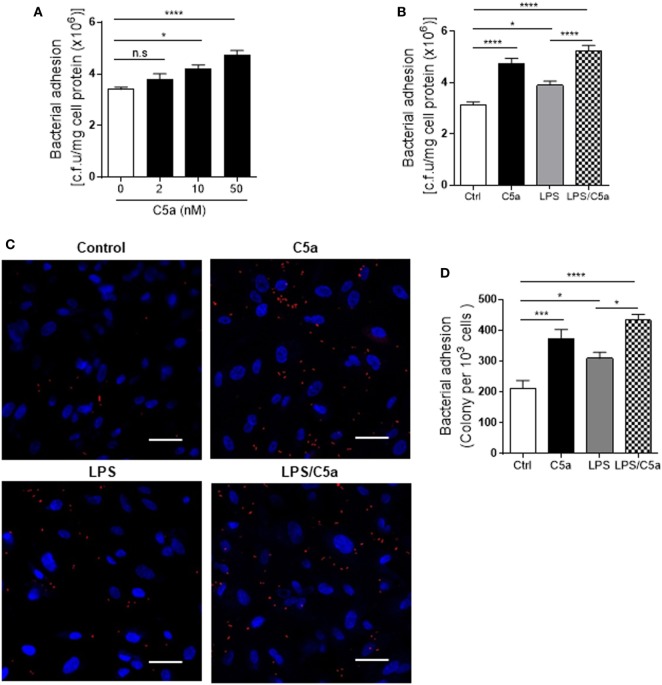Figure 1.
Effect of C5a stimulating renal tubular epithelial cell (RTEC) on bacterial adhesion to the RTEC. RTEC were pre-treated with C5a (as indicated or otherwise 10 nM) and/or LPS (800 ng/mL) for 24 h and subjected to assessment of bacteria binding to RTEC. (A,B) Bacterial adhesion to RTEC, evaluated by bacterial plate count assay. (C,D) Bacterial adhesion to RTEC, evaluated by fluorescence microscopy analysis. (C) Representative fluorescence images of tri-iodothyronine and tetramethylrhodamine-labeled J96 adhesion to RTEC, J96 (red), and 4’,6-diamidino-2-phenylindole (blue). Scale bars, 50 µm. (D) Quantification of bacteria adhesion to RTEC corresponding to the images in (C). Results were expressed as number of bacteria per 103 RTEC. (A,B,D) data were analyzed by one-way ANOVA with Tukey’s multiple comparisons test [(A) n = 12 individual wells per group, (B) n = 8 individual wells per group, (C) n = 6 individual images (×200 magnification) from two coverslips per group]. All results shown are representative of three independent experiments. *P < 0.05, ***P < 0.001, ****P < 0.0001.

